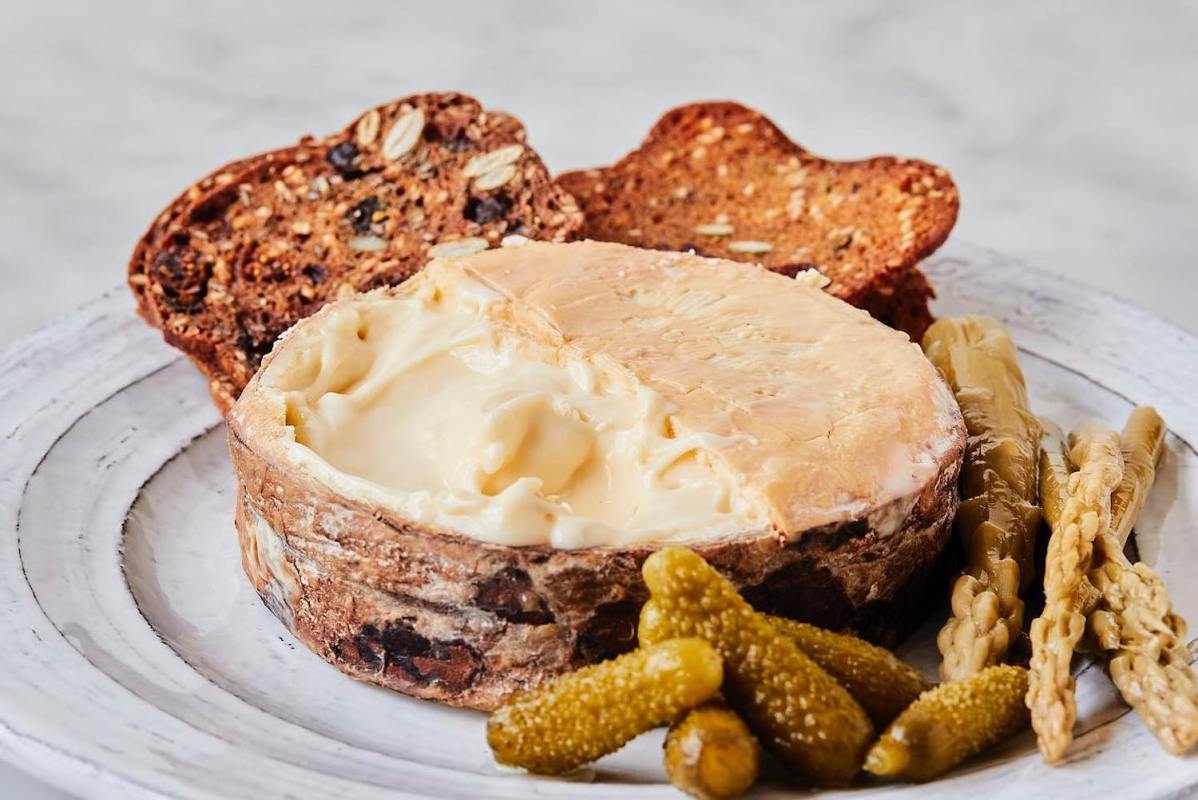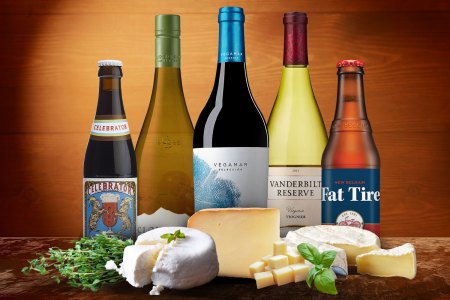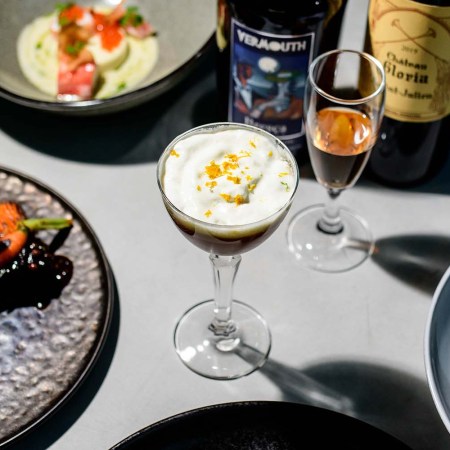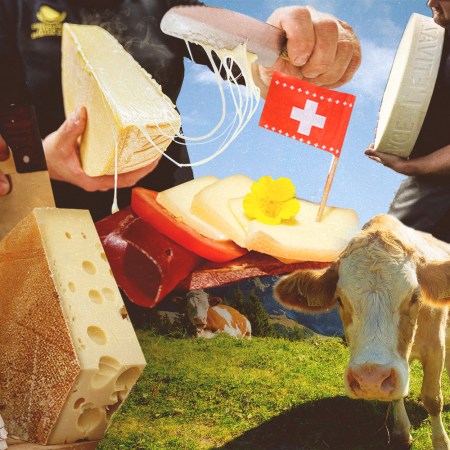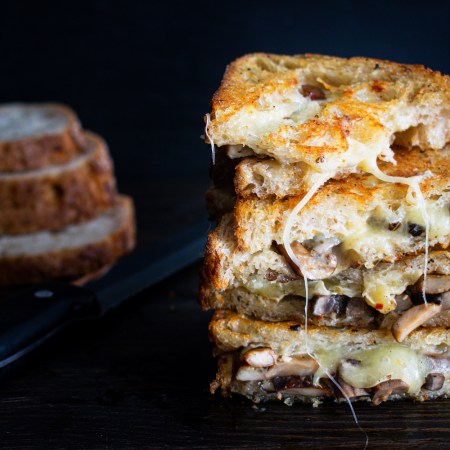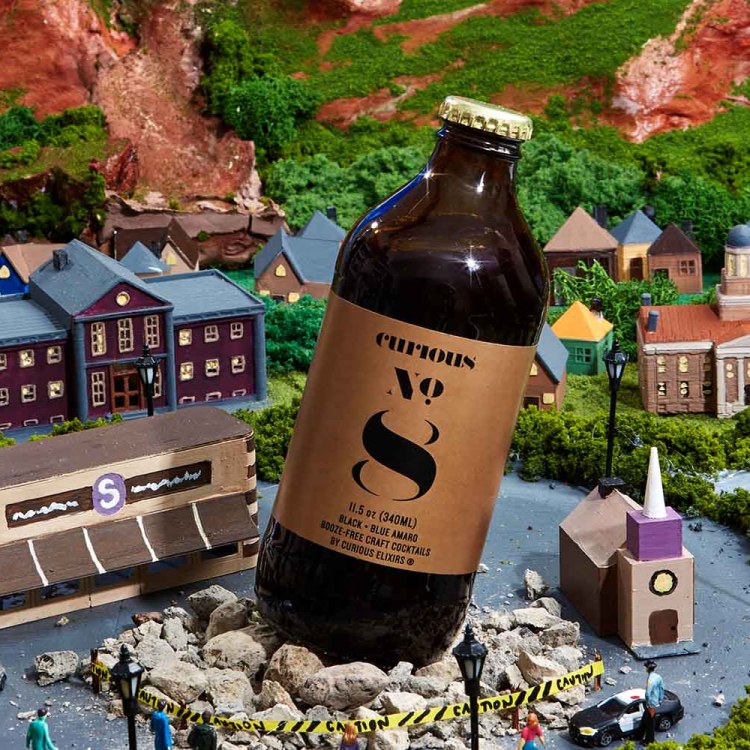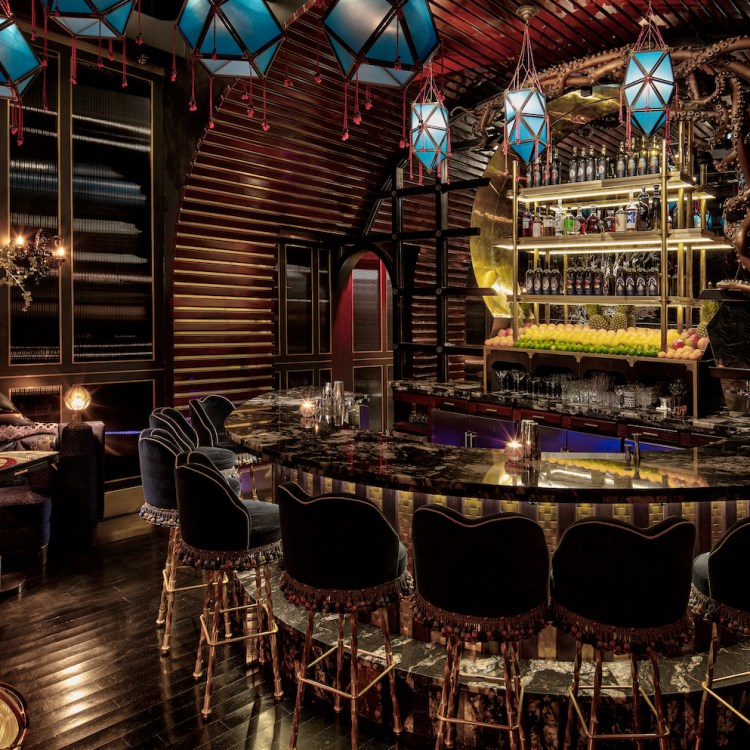I’ve been living in France for 16 years. When people ask what brought me here, most of the time, I say “the cheese.” These days, it’s even the way I make a living: I write about cheese, leading guided tours and tastings at some of Paris’s most illustrious cheese shops, and occasionally gallivant on YouTube in search of the city’s best croque monsieur, aka the sexiest grilled cheese you ever did see. At the end of my tastings, folks typically have one question for me: “Where can we find these cheeses in the United States?”
To which I say: “Don’t.”
There are a number of reasons why I don’t buy French cheese in the United States. The first is the price point, which is almost prohibitively expensive compared to prices in Paris. But perhaps more importantly, iterations of French cheeses sold to the American public are lacking an essential element of what makes French cheese so delicious: raw milk.
Most French cheese is made with unpasteurized milk, which boasts far more complexity and nuance than the pasteurized stuff, heated to kill off both harmful and helpful bacteria. American law states that any cheese aged fewer than 60 days must be made with pasteurized milk, which means you can find “real” versions of pressed-and-cooked French cheeses like Comté or pressed-and-uncooked cheeses like Morbier because they’re aged well beyond this point. But any soft cheese you can think of, from creamy chèvre to runny Brie, have to be pasteurized when sold Stateside. Imported soft French cheeses like Brie and Camembert must also be pasteurized — and in my humble opinion, they pale in comparison to the real deal.
Luckily, cheese fans in the United States can look elsewhere. Is my French citizenship on the line given my suggestion that you opt for American cheese instead of French? Potentially. But if I have a choice between a pasteurized version of Brie and a Brie-style cheese that’s pasteurized by design, I’m definitely going to opt for the latter. With that in mind, if you fall in love with a cheese in France, here’s what I recommend you pick up in the states to find similar flavors.
First, Get to Know These Cheese Types
The world of cheese can be divided into five major categories, each of which is made according to its own techniques and therefore boasts its own range of flavor profiles.
Let’s start with pressed cheeses, which are generally either hard, like Gruyere or cheddar, or semisoft, like Morbier or raclette. These are cheeses that are usually aged well over two months (some Comtés are aged more than three years). As such, they’re widely available in the United States, so I won’t get into them here.
Younger cheese families include fresh cheeses, like creamy goat. These are generally the youngest of the bunch, sold after just a few weeks, days or even hours of aging.
Next up, we have two categories known for their soft, oozing textures. Bloomy-rinded cheeses are soft cheeses with a white exterior, like Brie or Camembert. The Penicillium camemberti mold on the outside of these cheeses tends to lend them a mushroomy, woodsy sort of flavor. Washed-rind cheeses, meanwhile, are soft cheeses with a sticky orange rind: your Limburgers and your Époisses. These tend to be particularly odoriferous, thanks to the presence of Brevibacterium linens on the rind — the exact same bacteria that makes your socks stink after a run. But on the palate, they have a savory, brothy, almost meaty character. Both of these soft cheese categories tend to be aged a few months and are therefore not available in raw milk form in the United States.
Blue cheese is the final category, known for veins of blue Penicillium mold. Some of these cheeses are aged more than 60 days, like Roquefort, while others are aged fewer, like some Fourme d’Ambert. Longer-aged cheeses are available on the U.S. market, but historically they’ve been almost prohibitively expensive because of import tariffs that sometimes total 300%.
So without further ado, these are the U.S. cheeses to try, based on your favorite French cheese.
Vermont Creamery Bijou Instead of Crottin de Chavignol
Despite using the French name, chèvre is perhaps the category where I notice the biggest aromatic divide between French and U.S. cheeses. French-made goat cheeses tend to be grassier and more lactic than their funky American counterparts, which often have more, for lack of a better word, goatiness. Crottin de Chavignol is an emblematic Loire Valley goat cheese known for its slight barnyardy aromas that nevertheless do not overpower the lactic creaminess of the cheese. And with its fudgy texture and Geotrichum rind, Bijou is a dead ringer for the original. With a slight funkiness and a balanced acidity, this cheese is perfect for those who think they don’t like goat cheese and find that, in France, they’re eating their words.
Baron Bigod Instead of Brie de Meaux
Brie de Meaux is one of seven different cheeses that sport the name “Brie” in France. With its briny, almost oystery quality and notes of root vegetables like turnip joining the mushroomy aromas Bries are known for, it’s perhaps the most emblematic of the bunch. But because it’s protected by AOP, the same label that precludes Californian bubbly from calling itself Champagne, this raw milk cheese cannot be exported to the United States. Instead, French-made Bries sold in America are Bries de Nangis, a slightly milder, less complex, less aromatic recipe that can be made with pasteurized milk. But Baron Bigod, a pasteurized British play on Brie de Meaux from Suffolk, boasts almost all of the briny character of a true Brie de Meaux, even without the raw milk. (And don’t tell the French but, on many occasions, I actually find myself preferring it to the original.)
Does Wine or Beer Pair Better With Cheese?
We put the two beverage categories head to head to see which one tastes better with our favorite cheesesBent River Camembert Instead of Camembert de Normandie
The Camembert category is rife with strife, having become a widespread phenomenon in France in the 19th and early 20th centuries, long before cheeses were protected with the AOPs and AOCs 46 of them now boast. Camembert’s early success came first, thanks to the advent of rail transport, rendering the little wheels in their wooden boxes easy to send near and far. Later, it was the official cheese ration in the trenches, converting World War I soldiers from to this Norman delicacy. As a result, the word “Camembert” is not protected as Comté or Roquefort are, and it is instead the phrase “Camembert de Normandie” that, in 1982, came to refer to the funky cheese so emblematic of this northwestern haven of French dairy. A great Camembert de Normandie should be mushroomy and very aromatic — when you open your fridge, you should have no doubt it’s in there. Most run-of-the-mill Camemberts pale in comparison, including pasteurized French exports. But Alemar’s flagship Bent River does nothing of the kind, delivering on the promise of Camembert’s nickname, pieds de dieu: feet of god.
Cato Corner Farm Hooligan Instead of Munster
Neither Hooligan nor Munster taste anything like Muenster, a near-homonym referring to a semi-soft, pasteurized cheese created in the United States in the 19th century. Munster is an Alsatian specialty hailing from the monastic tradition of washing cheeses in brine, alcohol or both to promote the growth of healthy (and stinky) bacteria on the rind, which conveys a sticky texture, an orange color and an odoriferous aroma. Muenster, meanwhile, is a semi-soft cheese whose orange rind comes from annatto, a seasoning that lends orange color to cheeses like cheddar. Mild, smooth and sweet, Muenster cannot compete with the assertiveness of a true Munster — but Hooligan can. Made by mother-son team Elizabeth MacAlister and Mark Gillman in Colchester, Connecticut, it’s an award-winning American cheese that’s made with raw milk and aged for 60 to 75 days, making it legal for sale in the states.
Meadow Creek Grayson Instead of Reblochon
Savoyard Reblochon’s name gives a hint as to how it was first produced. Back in the day, farmers were tithed based on the amount of milk their cows produced. So on the day of the taxman’s visit, they would purposefully under-milk their cows. Upon his departure, they’d finish the milking and produce Reblochon — a pressed-and-washed cheese with a meaty, brothy funk and a semisoft texture — with the ultra-rich milk. Helen Feete was told that making such a cheese would be impossible in the United States, but she proved everyone wrong with Grayson, which is made with rich, raw Jersey milk and aged to earthy, almost beefy delightfulness.
Jasper Hill Farm Harbison Instead of Vacherin Mont d’Or
Brothers Andy and Mateo Kehler are known perhaps above all for their exquisite blue cheeses. But spruce bark-bound Harbison is a horse of a different color, evoking Vacherin Mont d’Or, a funky washed cheese made in the Alps and sold in a wooden box — which is convenient, seeing as in France, this cheese is often drizzled with white wine and baked before being spooned over potatoes. Harbison is just as delicious prepared in this manner as it is eaten all on its own.
Old Chatham Ewe’s Blue Instead of Roquefort
Roquefort is perhaps the king of French blue cheeses and was the very first to boast a proto-AOP certification for cheese back in the ‘20s. Luxurious and pungent, it boasts not only bitter blue character but a present assertiveness, thanks to its reliance on ewe’s milk. The same is true of this Finger Lakes gem from Old Chatham, perhaps best enjoyed alongside something slightly sweet like local honeycomb or an ice wine.
Every Thursday, our resident experts see to it that you’re up to date on the latest from the world of drinks. Trend reports, bottle reviews, cocktail recipes and more. Sign up for THE SPILL now.
